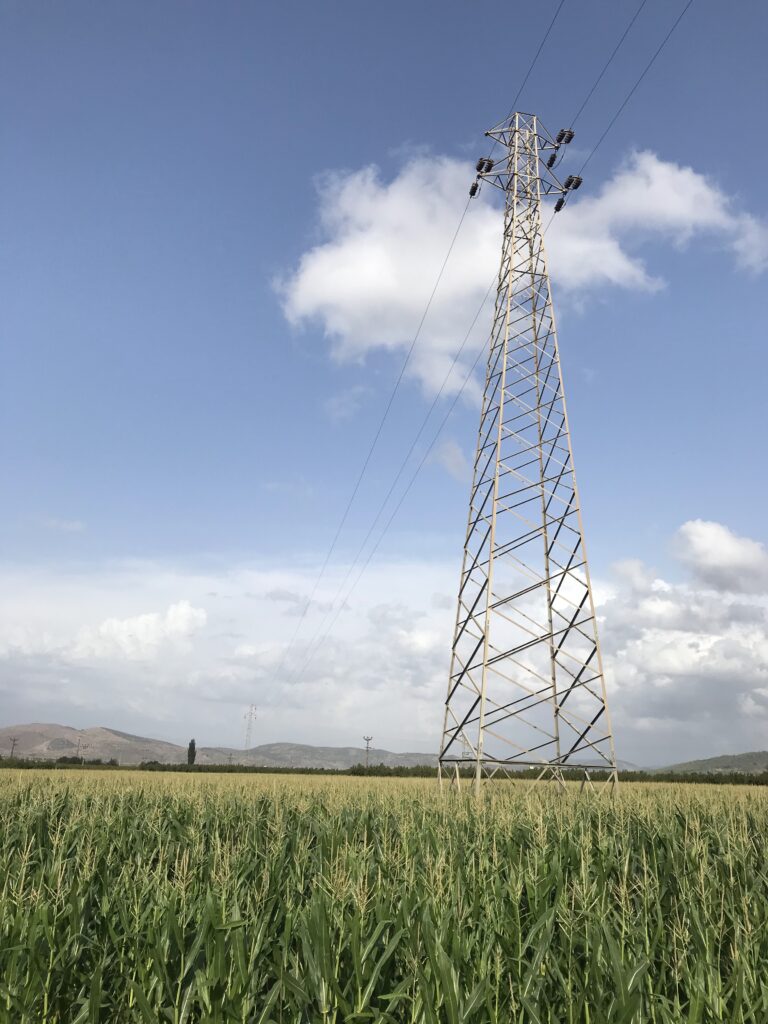Imagine being able to inflate your tires effortlessly, without having to strain yourself and use a bulky, noisy compressor. With an average portable tire compressor, this dream becomes a reality. But what about the noise level? This article will explore the noise level of an average portable tire compressor, revealing whether it’s a whisper or a roar.

Understanding Noise Level
Defining noise level
Noise level refers to the intensity or volume of sound in a given environment. It is typically measured in decibels (dB) and can vary greatly depending on the source of the sound. In the case of a portable tire compressor, noise level refers to the sound produced by the compressor while in operation.
The importance of assessing noise level
Assessing the noise level of a portable tire compressor is crucial for several reasons. Firstly, excessive noise can be a nuisance to both the user and those in the surrounding area. Excessive noise can also indicate potential mechanical issues with the compressor. Additionally, prolonged exposure to high noise levels can have detrimental effects on one’s health, including hearing damage and increased stress levels.
Factors contributing to noise level
Several factors contribute to the noise level of a portable tire compressor, including the design elements, materials used, and the speed at which it operates. The design elements, such as the shape and size of the compressor, can affect the airflow and the generation of noise. The materials used in the construction of the compressor can also impact its acoustic properties. Finally, the operation speed of the compressor can play a significant role in the noise level it produces.
Understanding Portable Tire Compressors
Definition and functionality of a portable tire compressor
A portable tire compressor is a compact device designed to inflate vehicle tires with ease and convenience. Its functionality lies in its ability to generate compressed air, which can then be used to inflate tires. Portable tire compressors typically feature a motor that powers a piston or a diaphragm to compress the air. They are lightweight, compact, and easy to transport, making them the perfect solution for inflating tires on the go.
Various types of portable tire compressors
There are several types of portable tire compressors available in the market. The most common types include piston compressors, which use a reciprocating motion to compress air, and diaphragm compressors, which use a flexible diaphragm to create pressure. Other types include rotary screw compressors, which generate air through a rotary motion, and centrifugal compressors, which use centrifugal force to increase air pressure. Each type has its own advantages and disadvantages, and the choice depends on individual needs and preferences.
Significance of portable tire compressor in our daily life
A portable tire compressor plays a significant role in our daily lives, particularly for vehicle owners. It provides a convenient and efficient solution for inflating tires, ensuring optimal tire pressure and improved fuel efficiency. With a portable tire compressor, you no longer have to rely on gas stations or depend on others for help when faced with a flat tire. It offers peace of mind and the freedom to handle tire inflation tasks anytime, anywhere.

Average Noise Level of a Portable Tire Compressor
Identifying the average noise level
The average noise level of a portable tire compressor can vary depending on different factors such as the type of compressor, its design, and its overall quality. However, on average, a portable tire compressor produces noise levels ranging from 70 to 90 decibels (dB) during operation. It is important to note that prolonged exposure to noise levels above 85 dB can potentially lead to hearing damage, making it crucial to consider noise levels when selecting a portable tire compressor.
Comparing noise levels of different portable tire compressors
When comparing the noise levels of different portable tire compressors, it is essential to consider the specific decibel rating provided by the manufacturers. Some manufacturers provide this information in the product specifications, allowing users to make an informed decision based on their preferences and needs. By comparing noise levels, users can choose a compressor that strikes a balance between performance and noise reduction.
Correlation between noise level and efficiency of a portable tire compressor
The noise level of a portable tire compressor does not directly impact its efficiency in inflating tires. However, noise level can indirectly affect the user’s experience and overall satisfaction with the compressor. A compressor that produces excessive noise may be less desirable for users who value a quiet working environment or who frequently use the compressor in noise-sensitive areas. Therefore, noise reduction features can contribute to a more pleasant user experience, improving perceived efficiency.
Factors Affecting Noise Levels of Portable Tire Compressors
Design elements influencing noise level
The design elements of a portable tire compressor significantly contribute to its noise level. Factors such as the shape, size, and airflow dynamics can influence the noise generated during operation. Compressors with well-designed housing and soundproofing materials tend to produce lower noise levels compared to those with poor design choices. Therefore, manufacturers consider factors such as muffling techniques, insulation, and vibration dampening to minimize noise generation and create a more pleasant user experience.
Impact of material on noise level
The choice of materials used in the construction of a portable tire compressor can have a considerable impact on its noise level. Materials that absorb or dampen sound vibrations can help reduce noise transmission. Soundproofing materials such as rubber, foam, and other acoustic insulation materials are commonly used to reduce noise levels in compressors. By utilizing materials with excellent noise-reducing properties, manufacturers can effectively minimize noise generation and enhance user comfort.
Role of operation speed in noise generation
The operation speed of a portable tire compressor can directly affect the noise levels it produces. Higher operation speed tends to result in increased noise levels due to greater air displacement and more rapid movement of internal components. Manufacturers may employ speed control features that allow users to adjust the operation speed and, in turn, the noise level of the compressor. By offering speed options, users can select a quieter operation when necessary, contributing to a more comfortable working environment.

Measurement of Noise Level in Portable Tire Compressor
Methods to measure noise levels
To measure the noise level of a portable tire compressor accurately, specific methods are employed. These methods typically involve the use of sound level meters, which measure sound pressure levels in decibels (dB). The most common method is to place the sound level meter at a specific distance from the compressor during operation and record the noise level readings. This ensures consistent and reliable measurements that reflect the actual noise level emitted by the compressor.
Tools used for noise measurement
In addition to sound level meters, other tools may be used for noise measurement in portable tire compressors. A sound level calibrator can be utilized to verify and calibrate the accuracy of sound level meters. This ensures that the measurements are reliable and consistent. Additionally, a frequency analyzer can provide detailed information about the frequency distribution of the noise generated by the compressor, helping identify specific noise components and potentially guide noise reduction efforts.
Understanding dB measurement for noise
Decibels (dB) are used to measure noise levels because they represent the logarithmic ratio of sound pressure to a standard reference level. The dB scale is logarithmic to accommodate the large range of human hearing sensitivity. Each increase of 10 dB represents a doubling of sound intensity. For example, a compressor with a noise level of 80 dB is twice as loud as a compressor with a noise level of 70 dB. Understanding the dB measurement allows users to compare and make informed decisions when selecting a portable tire compressor based on noise levels.
Reducing Noise Level in Portable Tire Compressors
Effective ways to minimize noise
Manufacturers employ various techniques to reduce the noise level in portable tire compressors. One effective method is the use of soundproofing materials inside the compressor housing to absorb and dampen noise vibrations. Another method involves optimizing the design of internal components to minimize noise generation during operation. Additionally, implementing advanced noise reduction technologies such as insulation layers, mufflers, and vibration dampening systems can significantly reduce noise levels and create a quieter working environment.
Significance of noise reduction
The significance of noise reduction in portable tire compressors lies in creating a more pleasant user experience. Reduced noise levels not only minimize disturbance to the user but also allow for operation in noise-sensitive environments. Furthermore, noise reduction contributes to the overall perception of quality and professionalism associated with the compressor, enhancing user satisfaction and brand reputation. By prioritizing noise reduction, manufacturers can deliver compressors that meet the needs and preferences of a wide range of users.
In-built noise reduction features
Many portable tire compressors come equipped with in-built noise reduction features designed to minimize noise levels during operation. These features can include noise insulation layers, soundproofing materials, mufflers, and vibration dampening systems. By incorporating these features into the design, manufacturers ensure that the compressor operates with reduced noise levels while maintaining optimal performance. Users benefit from quieter operation and the ability to use the compressor in various environments without causing excessive noise disturbance.
Impact of High Noise Level on Users
Potential hearing damage
Exposure to high noise levels from portable tire compressors over an extended period can have long-term effects on hearing health. The loud noise generated by some compressors can exceed the safe threshold for prolonged exposure, potentially leading to noise-induced hearing loss. It is important for users to protect their hearing by using ear protection, reducing noise levels when possible, and opting for compressors with lower noise ratings.
Influence on performance and productivity
High noise levels can significantly impact performance and productivity. Excessive noise can be distracting, making it difficult for users to concentrate and work efficiently. This can lead to decreased productivity and potentially affect the quality of work. Additionally, prolonged exposure to high noise levels can cause fatigue, leading to decreased alertness and concentration. By minimizing noise levels, users can achieve better focus and maintain a higher level of performance.
Stress and other psychological effects
Noise pollution from portable tire compressors can also lead to stress and other psychological effects on users. Persistent exposure to loud noises can create a constant state of stress, which can have negative impacts on mental well-being. People who frequently use compressors in noisy environments may experience feelings of irritation, frustration, and anxiety. By reducing noise levels, users can create a more peaceful and comfortable working environment, promoting a sense of calm and well-being.
Future Trends in Noise Reduction of Portable Tire Compressors
Emerging technologies for noise reduction
The future of noise reduction in portable tire compressors is promising, with various emerging technologies being developed to further minimize noise levels. One such technology is active noise cancellation, which uses advanced algorithms and microphones to detect and counteract noise in real time. Another technology involves the use of innovative sound insulation materials with enhanced noise reduction properties. As technology continues to advance, manufacturers are exploring these and other solutions to provide quieter and more efficient compressors to users.
Potential impact on the user experience
The adoption of advanced noise reduction technologies in portable tire compressors has the potential to greatly enhance the user experience. Quieter operation will result in reduced disturbance, allowing users to carry out tasks without causing noise pollution in their surroundings. Additionally, a quieter working environment can improve concentration, focus, and overall satisfaction with the compressor. Users will also have the flexibility to use their compressors in various noise-sensitive environments without worrying about causing unnecessary noise disruption.
Projection of future noise regulations on portable tire compressors
As awareness of noise pollution and its impact on human health increases, it is likely that future noise regulations will be implemented to control the noise levels of portable tire compressors. These regulations may include stricter noise level limits that manufacturers must adhere to when designing and producing compressors. This could drive further innovation in noise reduction technologies and place greater emphasis on the development of quieter, more efficient compressors. Users can expect future compressors to comply with these regulations, ensuring a quieter and more sustainable user experience.
In conclusion, understanding the noise level of a portable tire compressor is essential for selecting a compressor that meets individual needs and preferences. Factors such as the design elements, materials used, operation speed, and noise reduction features can significantly impact the noise level produced by a compressor. By considering these factors and understanding the potential impact of high noise levels, users can make informed decisions and prioritize noise reduction in their compressor selection. The future of noise reduction in portable tire compressors looks promising, with emerging technologies and potential regulations driving innovation and creating a quieter and more efficient user experience.
